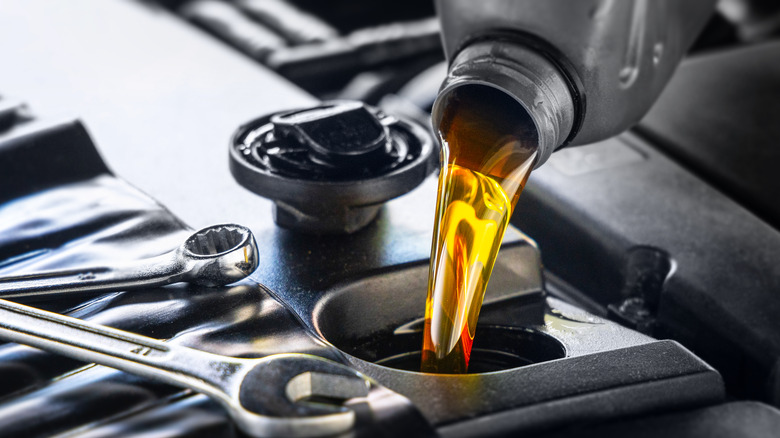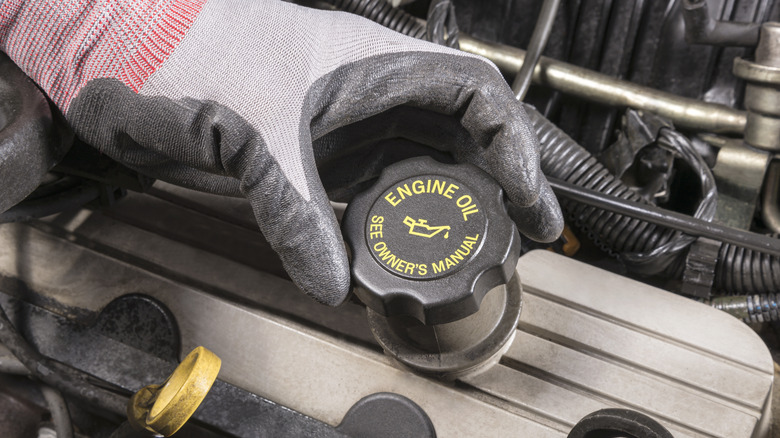Motor Oil: Understanding The Classifications And What Sets Them Apart
When you look at a bottle of motor oil, you are assaulted by all the numbers and letters and whether or not it's synthetic. Without knowing what those figures signify, it can look almost random when it's anything but. Additionally, there are multiple classifications of motor oil that are better suited to one particular sort of car over the other. Knowing what these numbers and classifications mean can help you discover the best type of oil for your car and also help you prevent mistakes from putting in the wrong type of oil.
The first number you will likely notice will be formatted like "5W-30" or "10W-30," and there are many more you might run across. This refers to the engine's viscosity (the ease of flow) at different temperatures. The first number, with a "W" suffix, refers to its performance in cold weather or Winter. The second number refers to the oil's performance as the engine heats up. Lower is better. However, you want an oil that retains at least some thickness as the engine heats up to protect vital components. It's always recommended to use the oil viscosity recommended by your car's owner's manual. Modern car engines are tuned with a specific oil viscosity in mind, and messing with that can damage your engine.
The best classification for your car
Motor oils also have different classifications that mandate what age of engine it's best used in. According to the United States Department of Energy, this is also called the API (American Petroleum Institute) Service Classification. "SA" is the oldest classification. It's designed for car engines dating back to 1930. "SB" is used only car engines from 1951 and earlier. "SC" classifies oil for car engines prior to 1967. "SD" and "SE" are for engines earlier than 1971 and 1979, respectively. "SF," "SG," and "SH" cover motors older than 1988, 1993, and 1996 respectively. The U.S. Department of Energy qualifies those classifications as obsolete, and it's unlikely you'll see any of those oil classifications for sale at your local auto parts store.
Classifications "SJ" covers engines that are older than 2001, "SL" is for engines older than 2004, "SM" and "SN" are for engines older than 2010, with SN classified oil operating significantly cleaner. Lastly, "SP" will most likely be what you will see at most stores as it was developed in 2020 and is backward compatible with older engines, meaning that it's often the best choice to use, no matter how old your car is. However, there are always exceptions to the rule when restoring classic cars with finicky powerplants.
Above all things, remember to change your oil regularly, and if you aren't sure what oil classification to use, refer to your owner's manual or consult a certified mechanic.

